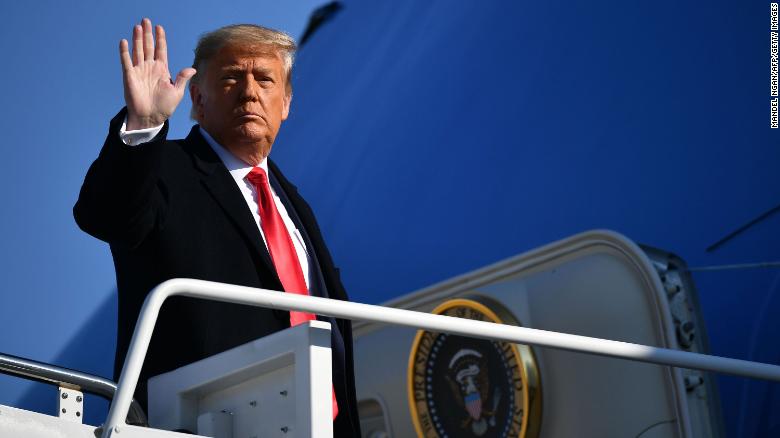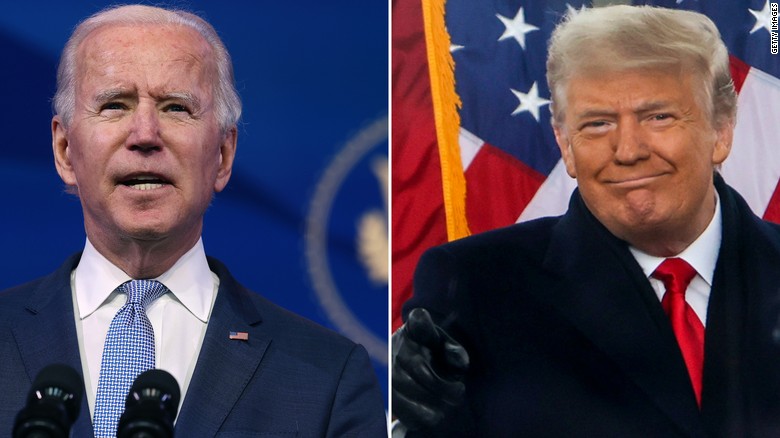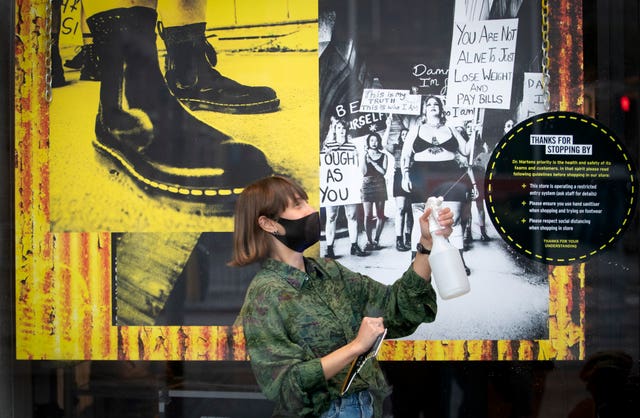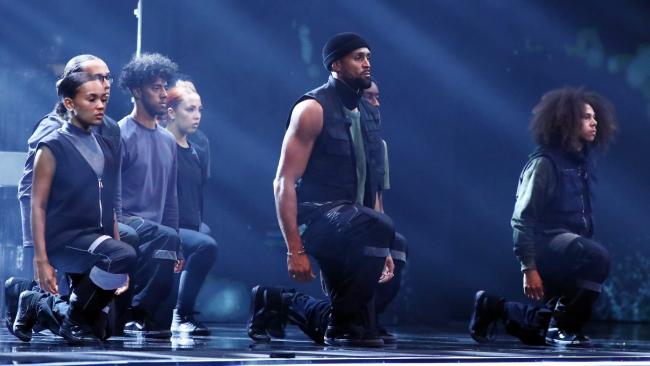REPUPLICAN MINING SHILL
Tribes slam GOP lawmaker for trying to derail Haaland nomination
WASHINGTON — A group of Native American tribes is rushing to the defense of Rep. Deb Haaland, D-N.M., President-elect Joe Biden’s pick for Interior secretary, and blasting a Republican lawmaker’s campaign to derail Haaland’s historic nomination as a slap in the face to his constituents.

© Provided by NBC News
Rep. Pete Stauber, R-Minn., who sits on the House’s subcommittee on Indigenous Peoples, has been asking fellow lawmakers to join him in urging Biden’s transition team to withdraw Haaland’s nomination. In a draft of a letter obtained by NBC News, Stauber cites Haaland’s support for the Green New Deal and opposition to oil and gas drilling on public lands.
“Nominating Representative Haaland is a direct threat to working men and women and a rejection of responsible development of America’s natural resources,” Stauber wrote in his letter, a copy of which he circulated to fellow House members asking them to add their names.
Now all five tribes in Stauber’s congressional district are accusing him of blindsiding them and appeasing big industrial interests at their expense.
“This historic nomination is more important to us and all of Indian country than any other Cabinet nomination in recent history,” leaders of the five tribes wrote in a letter dated Jan. 14 and reviewed by NBC News. “Your opposition to the first and only American Indian ever nominated to a Cabinet position is likely to reverberate across Indian country.”
The letter was signed by the chairs of the Mille Lacs Band of Ojibwe, Bois Forte Band of Chippewa, Grand Portage Band of Lake Superior Chippewa, Fond du Lac Band of Lake Superior Chippewa, and Leech Lake Band of Ojibwe.
Stauber’s communications director, Kelsey Mix, said the focus of his efforts was limited to “the anti-jobs and anti-mining record of the nominee” and policies she’s embraced that would “severely and negatively impact every economic sector and family in Northeastern Minnesota.” She said Stauber hadn’t consulted with any industry groups in crafting the letter, still in draft form.
Rep. Pete Stauber, R-Minn., who sits on the House’s subcommittee on Indigenous Peoples, has been asking fellow lawmakers to join him in urging Biden’s transition team to withdraw Haaland’s nomination. In a draft of a letter obtained by NBC News, Stauber cites Haaland’s support for the Green New Deal and opposition to oil and gas drilling on public lands.
“Nominating Representative Haaland is a direct threat to working men and women and a rejection of responsible development of America’s natural resources,” Stauber wrote in his letter, a copy of which he circulated to fellow House members asking them to add their names.
Now all five tribes in Stauber’s congressional district are accusing him of blindsiding them and appeasing big industrial interests at their expense.
“This historic nomination is more important to us and all of Indian country than any other Cabinet nomination in recent history,” leaders of the five tribes wrote in a letter dated Jan. 14 and reviewed by NBC News. “Your opposition to the first and only American Indian ever nominated to a Cabinet position is likely to reverberate across Indian country.”
The letter was signed by the chairs of the Mille Lacs Band of Ojibwe, Bois Forte Band of Chippewa, Grand Portage Band of Lake Superior Chippewa, Fond du Lac Band of Lake Superior Chippewa, and Leech Lake Band of Ojibwe.
Stauber’s communications director, Kelsey Mix, said the focus of his efforts was limited to “the anti-jobs and anti-mining record of the nominee” and policies she’s embraced that would “severely and negatively impact every economic sector and family in Northeastern Minnesota.” She said Stauber hadn’t consulted with any industry groups in crafting the letter, still in draft form.
“The nominees’ support for extreme policies is not what hardworking families across northeast Minnesota need, which is why Congressman Stauber cannot get behind her nomination,’ Mix said, adding that he “remains committed to working with and building strong relationships with tribal communities and their leaders, and he will continue to hear them out on this issue.” HEARING IS NOT LISTENING
A spokeswoman for the Biden transition declined to comment.
Stauber, in his letter, argued that Haaland’s approach to natural resources would stifle a key economic engine, focusing on legislation Haaland co-sponsored banning mining in a 234,000-acre stretch of Superior National Forest. That includes an area in Stauber’s district where the Twin Metals mining company is seeking to mine for copper. Stauber has supported the mine while many Democrats oppose it. Several environmental groups allege Stauber interfered in the environmental review process for Twin Metals. Stauber has said he merely sought to ensure a “fair, rigorous regulatory process.”
In a separate letter to Stauber, the Midwest Alliance of Sovereign Tribes, which represents 35 tribal nations in the region, called the lawmaker’s campaign against Haaland “offensive, “hostile” and “irresponsible. The group’s chair, Aaron Payment, said Stauber had “subordinated the interests of Indian tribes to the interests of those you represent in your letter without any consultation with the tribes.”
“We are unaccustomed to any member of Congress serving in such a public role in leading an attack that diametrically opposes the wishes of nearly all of Indian country,” Payment wrote. “This is unprecedented."
Haaland, a Democratic lawmaker from New Mexico and member of the Laguna Pueblo people, serves alongside Stauber on the House Natural Resources Committee. If confirmed, she would lead a department with broad oversight over tribal lands in the U.S. and the complicated relationship between tribal nations and the federal government.
In the House, Haaland has been a vocal opponent of drilling and mining on public lands, although as a Cabinet secretary she would be be responsible for carrying out the broader Biden administration’s policies. President-elect Joe Biden has pledged to ban new permitting for drilling on federal lands, a move expected to face swift legal challenges.
A spokeswoman for the Biden transition declined to comment.
Stauber, in his letter, argued that Haaland’s approach to natural resources would stifle a key economic engine, focusing on legislation Haaland co-sponsored banning mining in a 234,000-acre stretch of Superior National Forest. That includes an area in Stauber’s district where the Twin Metals mining company is seeking to mine for copper. Stauber has supported the mine while many Democrats oppose it. Several environmental groups allege Stauber interfered in the environmental review process for Twin Metals. Stauber has said he merely sought to ensure a “fair, rigorous regulatory process.”
In a separate letter to Stauber, the Midwest Alliance of Sovereign Tribes, which represents 35 tribal nations in the region, called the lawmaker’s campaign against Haaland “offensive, “hostile” and “irresponsible. The group’s chair, Aaron Payment, said Stauber had “subordinated the interests of Indian tribes to the interests of those you represent in your letter without any consultation with the tribes.”
“We are unaccustomed to any member of Congress serving in such a public role in leading an attack that diametrically opposes the wishes of nearly all of Indian country,” Payment wrote. “This is unprecedented."
Haaland, a Democratic lawmaker from New Mexico and member of the Laguna Pueblo people, serves alongside Stauber on the House Natural Resources Committee. If confirmed, she would lead a department with broad oversight over tribal lands in the U.S. and the complicated relationship between tribal nations and the federal government.
In the House, Haaland has been a vocal opponent of drilling and mining on public lands, although as a Cabinet secretary she would be be responsible for carrying out the broader Biden administration’s policies. President-elect Joe Biden has pledged to ban new permitting for drilling on federal lands, a move expected to face swift legal challenges.



















